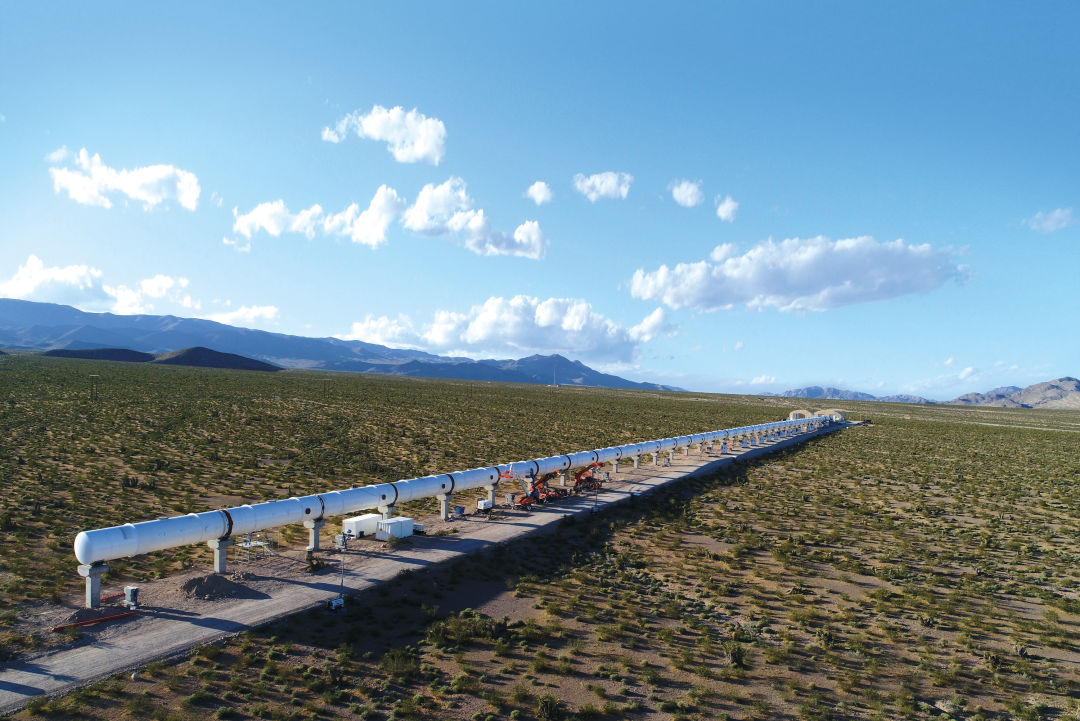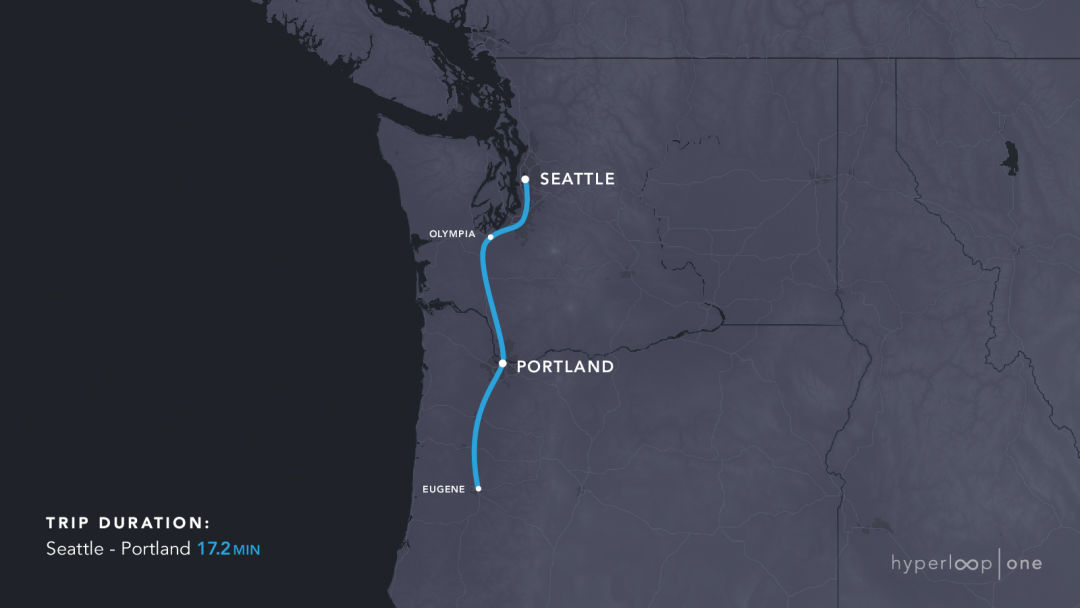Portland to Seattle in 17 Minutes? The Hyperloop Could Make It Happen.

Hyperloop One’s 500-meter-long test track in the Nevada desert
Image: Courtesy Hyperloop
Imagine skipping I-5 gridlock to shoot like a bullet from Portland to Seattle in 17.2 minutes. It’s not science fiction. Led by eight-year Boeing veteran Ahmed Elayouty and a group of University of Washington students, the Pacific Hyperloop project seeks to make that dream a reality through billionaire SpaceX founder Elon Musk’s Hyperloop technology.
“There’s already an appetite, between Vancouver [BC] to Portland, on connecting all our major cities,” Elayouty says. “If you’re going to spend on high-speed rail, you might as well spend on Hyperloop.”
Hyperloop One, a Los Angeles–based private enterprise currently testing the technology in the Nevada desert, is picking three of 11 American and 24 international proposals to finance and market to regional governments. If Pacific Hyperloop’s Portland-Seattle route is chosen, the money to build it could follow in the next two decades.
How would it work?
Users enter a train compartment–like pod, connected with other pods to form a megapod, in a pneumatic tube. Without air resistance, the megapods can reach nearly supersonic speeds of 760 miles per hour.
Where would we put it?
Hyperloop would cross 173 miles of public and private land, which could be acquired through eminent domain, right-of-way easements, and profit-sharing with railways. “Right now they’re doing the easy part: making the technology work,” says Mark Hallenbeck, director of the Washington State Transportation Center. “Then they can start the hard part: figuring out how to take land from people.” One bright spot: unlike traditional rail, Hyperloop’s tube would perch on stilts spaced 45 to 100 meters apart, preserving farmland.

The trip between Seattle and Portland would take 17.2 minutes.
Image: Courtesy Hyperloop
How much would it cost?
Hyperloop One would front some of the cost, and some public investment through state bonds would be needed. Once it’s established, Elayouty forecasts 50,000 round-trips per day on the Portland-Seattle route, putting the there-and-back cost around $50.
Who (or what) will ride it?
Pacific Hyperloop plans to start with a cut of the 36.1 million tons of cargo passing through Tacoma and Seattle ports, then progress to passenger transit. The most avid riders would be employees of tech companies like Intel, Amazon, and Microsoft.
Where would it stop?
Stations can be built without slowing down the pods, like off-ramps. Says Hallenbeck, “Centralia suddenly becomes Beaverton, a bedroom community for Portland.”




